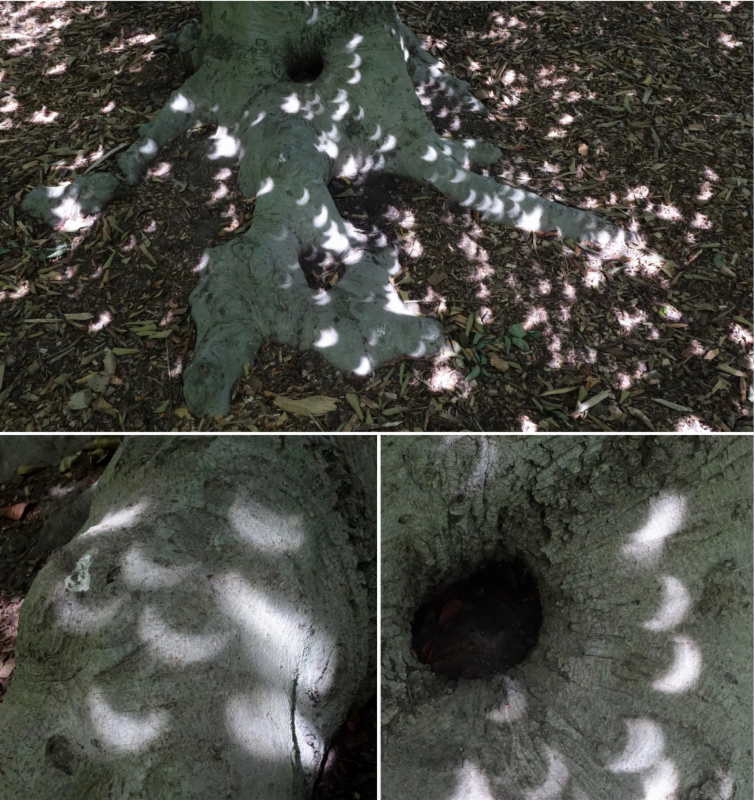“Why, during eclipses of the Sun, if one makes observations of them through a sieve or through leaves (of a plane tree or another broad-leaved tree, for example) or by joining the fingers of one hand to those of the other, the beams become crescents on the ground?” So wrote Aristotle (perhaps), more than 2 millennia ago. We now know that tiny gaps between overlapping leaves of a tree create a pinhole camera, projecting the sun as it is eclipsed, onto the ground.
The Arnold Arboretum of Harvard University offered nearly 15,000 woody plant specimens to experience what Aristotle described so long ago. Our two oriental plane trees (Platanus orientalis, the species Aristotle referred to) were not throwing great shadows, so I made my way to one of my favorite trees in the Arboretum, the European beech cultivar ‘tortuosa’ (14599*A) that forms a low hemisphere of twisted branches with dense foliage. The low crown was ideal, and the smooth surface of the bark of the trunk and extending roots made the crescent sun stand out vividly.

Above are three images from my time under the ‘Tortuosa’ beech. It could not have been more peaceful. To see more pictures of this most ephemeral interaction between the sun, the moon, and a beech tree, connect to my Flickr page here.